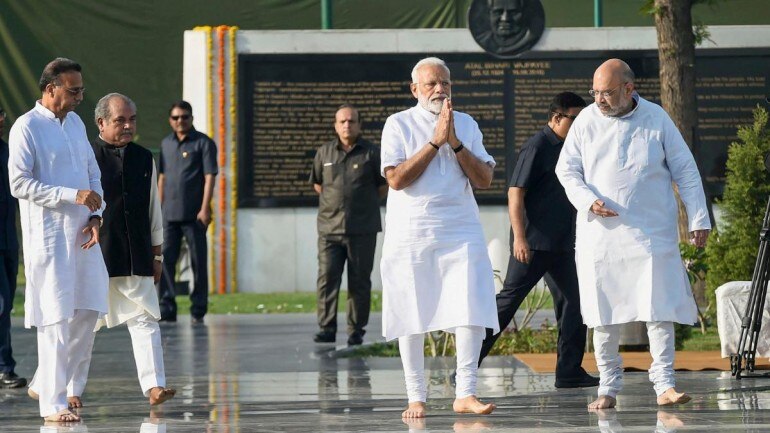Government ends up paying Rs 1364 cr to undeserving beneficiaries under the PM – KISAN, according to RTI data; reminisce to the Aadhar linked Direct Benefit Transfer Schemes that benefitted the nexus between bank officials and the state government employees?

While the farmers’ protest in Delhi takes a more robust hue as both concerned parties, the farmers and the Union government, refuse to give in, the Union government faces some embarrassment since it has ended up paying Rs 1,364 crore to undeserving beneficiaries under the PM – KISAN scheme.
According to the data released by RTI sought from the Union Agriculture Ministry has revealed that under the PM – KISAN scheme, a total of 20.48 lakh underserving beneficiaries, under which income support of Rs 6000 per year is paid to small and marginal farmers and deposited directly to their bank accounts, was wrongly credited to undeserving beneficiaries.
Prime Minister Narendra Modi launched the scheme in a grand and opulent manner on February 24, 2019, in Uttar Pradesh’s Gorakhpur. Under the scheme, an initiative through which small and marginal farmer families with a combined landholding or ownership of up to 2 hectares are provided income support in three equal installments as per the scheme.
The scheme reportedly would cost the Government approximately Rs 75000 crore per annum and came into effect from December 2019.
However, two categories have been identified of undeserving beneficiaries under the scheme which received payouts as ‘ineligible farmers’ and income tax payee farmers.’
The blunder on the part of the Government came to light via Venkatesh Nayak, belonging to Commonwealth Human Rights Initiative (CHRI), who sought the data through the RTI.
The data released by the Union Agriculture Ministry showed that the beneficiaries who received the income support – more than 55.58% and 44.41% belonged to the income tax payee category and the ineligible farmers’ category, respectively, and paid until July 31 st, 2020.
A majority of these undeserving beneficiaries belong to five states – Punjab, Assam, Maharashtra, Gujrat, and Uttar Pradesh, as per the data released.
This raises a pertinent question, just as we saw many of the valid beneficiaries under the Aadhar linked Direct Benefit Transfer scheme did not get the amounts or the benefits due to them but instead were siphoned off by a nexus between brokers, bank officials, bank correspondents, school staff and state government employees.
Could this be another scam in play?
Of the list of the states of these undeserving beneficiaries,
- Punjab tops the list accounting for 23.16 percent ( 4.74 lakh) of the total number of undeserving beneficiaries who received payouts.
- Assam follows with 16.87 percent ( 3.45 lakh) undeserving beneficiaries.
- Maharashtra accounts for 13.99 percent (2.86 lakh)
- Gujrat accounts for 8.05 percent (1.64 lakh)
- Uttar Pradesh with 8.01 percent (1.64 lakh)
The three states of Punjab, Assam, and Maharashtra totally account for more than 54.03 percent of the undeserving beneficiaries who received payouts.
According to the RTI data, a total amount of Rs 1364.13 crore was paid to recipients across the states in 68.20 lakh installments.
Rs 49.25 lakh installments were paid to IT Payee farmers’ while Rs 18.95 lakh installments were paid to ineligible farmers across the states mentioned herein.
Another Misstep by the Government?
The Direct Benefits Transfer Scheme, under which the Government sought to directly transfer money into the beneficiary bank account by combining the beneficiary bank account with the DBT and link them both with the Aadhar of the beneficiary – proved to be a big challenge.
With the introduction of Aadhar, the Government had hoped that a portion of the government-issued subsidies that did not reach the intended recipients would be the ideal solution to the problem.
However, it was seen that in reality, this was not the case, and Aadhar Cards instead posed big troubles as in the majority of the cases, the intended beneficiaries availing the Public Distribution System and the MGNREGS found it increasingly difficult to avail the same because of Aadhar linked with bank accounts.
It has instead been a problem even when it comes to the disbursements of money for LPG subsidies, scholarships, and even the PM Kisan Scheme, as has been noted above.
The problems have been citing due to multiple factors and a nexus between the people involved in the stages of disbursements and crediting the amounts of money.
The problems are multifold – most of the beneficiaries were unaware of when and how their personal details that included the Aadhar numbers, were being used to divert payments under the Andhra based DBT system.
In many of these cases, the Government departments created multiple bank accounts for the transfer of these subsidies; however, this without any information and intimation to the people, and hence these beneficiaries did not receive any amounts transferred under the DMT scheme.
The ‘linkage’ of the bank accounts is the ‘last linked’ bank accounts; hence there is no way of knowing whose account it is. The beneficiaries have no idea which bank accounts have been created in their names and linked to their Aadhar numbers.
Incidents of Scams
The whole process of linking Aadhar cards with bank accounts was done with the simple thought of making the entire system transparent and making sure that the proposed beneficiaries had claimed the money and subsidies intended for them.
However, an investigation done on the same highlighted the complex nexus between brokers, bank officials, bank correspondents, and the government employees wherein massive corruption in play came to light concerning disbursements related to pre – Matric Scholarships money for the minority poor students in Jharkhand.
The same misuse of funds was also reported in multiple states – Punjab, Assam, and Bihar.
The students in these states either received paltry sums of money or no money at all. It also highlighted how publicly available Aadhar numbers were misused to siphon away money in PM Kisan Scam ( as in the case above).
It also reported how LPG subsidies almost went negligible and ‘vanished’ during the lockdown because of the Covid -19 pandemic.
It is a shame that time and time, the changes or the introductions that are made in the name of public welfare and to curb corruption and misuse of the schemes and benefits intended for the poor and the marginal still fight the same loopholes and the same people because of whom these changes were brought about in the first place.
If the above information were not sought – the wrong beneficiaries would have continued to receive the benefits not intended for them. The Government would have never found out about the same and would have continued with its wrongful spending adding huge costs but still not reaching the goal.




